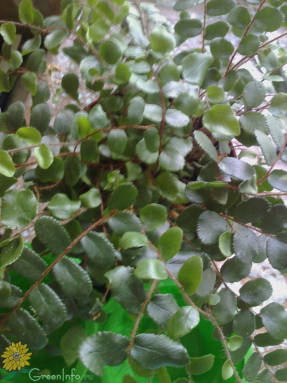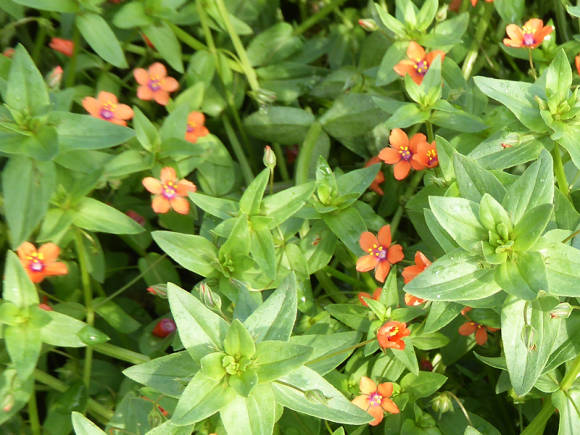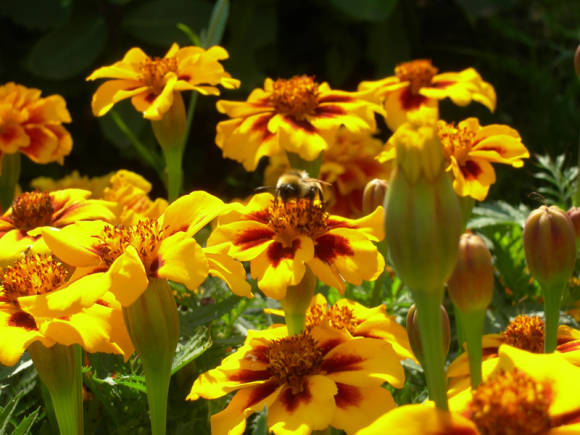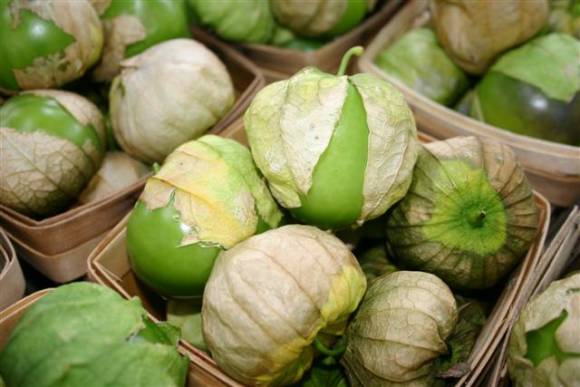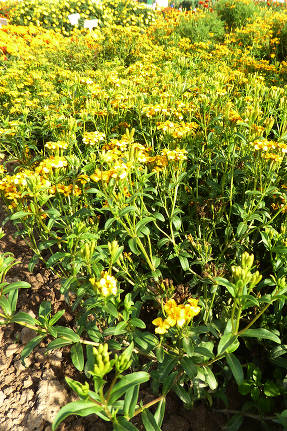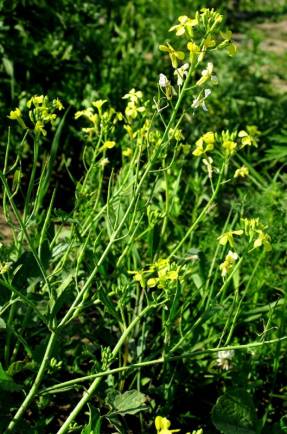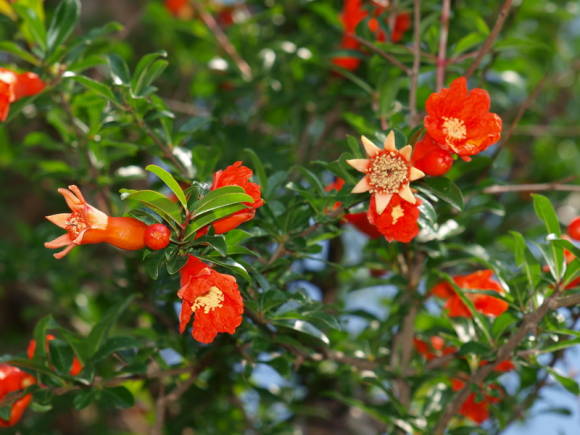Continuation. The beginning is in the article Peanuts: A favorite nut that is not a nut at all.
Peanuts, or peanuts, like any real southerner, are thermophilic and picky about the climatic conditions of growth, but it is still possible to grow it outdoors in the middle zone of our country. The main difficulty in growing peanuts is their exclusive dependence on heat, with a lack of which the plant simply stops growing, and you just have to forget about the harvest. But if in your area watermelons and melons have time to ripen over the summer, then peanuts will be able to please you with their harvest. The main thing is to carefully monitor the thermometer and constantly be ready to protect the planting of peanuts from cold snaps.

Landing... To plant this culture, it is necessary to choose a bright area, which in spring is quickly freed from snow and dries up, and in summer it warms up well with the sun's rays. The ideal option is a hill sheltered from the wind, since even slight shading has a bad effect on the development of the plant, leading to a significant decrease in yield. And open cold winds are simply destructive for him.
The soil... The main feature of this member of the legume family is that its fruits develop in the ground, and the ovaries sink into it after pollination. Therefore, the quality and structure of the soil is of paramount importance for the plant. The ground for peanuts needs neutral. Before planting peanuts, the soil with high acidity must be deacidified by adding a choice of limestone (ordinary or dolomitized), chalk, limestone tuff or lake lime. The groundnut grows best on light, maximally loose, well-permeable soils with water and air, with a significant admixture of sand, enriched with calcium and magnesium. Areas with stagnant water are not suitable for growing this crop, in this case you will have to create a system of good drainage. The increased salt content in the soil is also unfavorable for this plant. For the cultivation of peanuts, in this case, it will be necessary to introduce special compounds (phosphogypsum, stucco), and then the obligatory enrichment of the land with organic fertilizers.
Frosts are detrimental to peanuts, so they are planted in open ground in late spring, usually in the second half of May or early June. The kidney should become well warmed up, its temperature should be at least + 12 ... + 15 ° C.
Planting pattern - 50-60 cm between rows, 15-20 cm - between plants in a row. This planting scheme is due to the fact that caring for peanuts is close to potato farming and involves periodic hilling of plantings.
Seeds are sown in pre-prepared holes, placing 3-5 seeds at an average depth in each. The ground should be moist, but not wet. The soil layer above the seeds should be about 5 cm. After planting, the plant needs abundant watering. It is carried out so as not to erode the soil. It is better to water slowly and with a weak pressure of water, thoroughly moistening the entire surface of the garden. It is desirable 2-3 times to saturate the soil with water as much as possible. As soon as puddles appear in the garden, watering is stopped.
Temperature... Peanuts develop well at temperatures above + 20 ° C. When the temperature drops below + 15 ° C, plant growth stops. Therefore, in cool weather, it is advisable to cover it with a film or other special material.
Care... The first sunrises of peanuts must be protected from the attacks of birds, which find a real delicacy in it. Feathered thieves can completely destroy peanut plantings.
Peanuts usually bloom at the end of June. This culture blooms for only one day. Flowers bloom in the early morning and wither in the evening. The peanut flowers must have time to pollinate within 24 hours.At the end of pollination, peanut ovaries are buried in the ground, where future fruits ripen. After lowering the stalk into the ground, the bushes require mandatory careful hilling.
The basic care for peanuts is the same as for most garden plants - weeding, watering and feeding. For peanuts, regular hilling is very important - 4-5 times during the growing season. How much harvest the bushes will bring depends on the frequency and correctness of this procedure. The first hilling of plantings is carried out as soon as the fruitful shoots sink to the soil. This usually occurs 10 days after flowering is complete. Hilling plantings should be as high as possible in order to facilitate the penetration of the ovaries into the soil, then peanuts will lay more tiers with nuts. It is better to carry out hilling after intensive watering.
Watering... Abundant watering for the peanut is especially important during budding and flowering. At this time, the plantings are watered twice a week with warm water. But here it is important to observe the measure, since waterlogging of the soil can lead to rotting of the roots of peanuts. After flowering, the frequency of watering is determined by the weather conditions. If the summer is rainy, it will have enough natural moisture. On dry hot days, watering is still required for plants, but rare and abundant. To accelerate the ripening of fruits, in September, watering is minimized, and 2 weeks before harvesting, they completely stop.
Until the nut has closed its leaves, you need to regularly weed the beds with peanuts so that the weeds do not clog the young plants. Under mature, well-developed peanut bushes, excess grass no longer grows.
Top dressing carried out three times a season with complex mineral preparations with an increased content of phosphorus and potassium.
Peanuts are quite disease resistant.

Harvest... In the middle lane, peanuts are usually harvested in the second half of September. When the leaves and the stem begin to dry and turn yellow on the plant, it means that the nuts can be dug up. Dig up the nuts, gently shake off the ground and place in a dry place. Further, the bushes are completely dried. After 10 days, the fruits can be separated.
Collection and storage of seeds... To get seeds for germination, after the plant has dried (but not dried!), The fruits are left in the shell, stored until spring in an airtight container and placed in a cool place, for example, in a cellar or in a refrigerator. Peanuts must be in their shells before they are planted in the ground. When planting, you do not need to peel off the brown paper shell from the nut!

Planting method in beans... You can also plant peanuts in beans. Experienced gardeners who cultivate this nut on their plots recommend this method of breeding it. The beans contain a lot of nutrients that contribute to the full development of the seedlings, so the seedlings will hatch through the soil faster and will be stronger and healthier than when planting peanut seeds.
Since the growing season for peanuts is long, many gardeners prefer to cultivate this crop in seedlings. As with other plants, seedlings increase the quantity and quality of the crop.
The beans are sown in April in peat pots or any other shallow seedling container. The containers are filled with a loose and nutritious substrate, which can be easily prepared by mixing the soil from the site with humus and sand, taken in equal amounts. Before planting, the seeds are soaked in a solution of potassium permanganate.
Having spread the beans into pits 3-4 cm deep, they are covered with soil. To accelerate the emergence of seedlings, the containers are covered with film or glass, and then placed in a warm, bright place, protected from direct sunlight. Caring for peanut seedlings is the same as for other vegetable crops. In the second half of May, seedlings are planted in a permanent place in open ground, usually 2 weeks after germination.
Growing peanuts indoors

Interestingly, peanuts can be grown indoors. This crop is capable of producing crops even when living in a pot. Of course, the harvest will not be as plentiful as when grown in the open field, but how much pleasure can you get from the very fact of getting it on the windowsill, especially for the younger family members! In addition, this is a great idea for those who do not have their own summer cottage.
When growing indoors, it is necessary to pick up a fairly voluminous pot, at the bottom of which it is imperative to arrange a drainage layer. Planting seeds or beans of peanuts is carried out in the spring, observing the requirements of the culture for the composition and structure of the soil. The beans can be squeezed lightly with your hands so that the shell cracks slightly. Plant the peanuts to a depth of 2 cm by placing the seeds or beans in the center of the container. Thoroughly watering the soil in a pot, it is covered with a film with several holes so that the plantings can breathe. The room temperature should not drop below + 20 ° C. The soil in the pot should not dry out, but the planting will not tolerate excess moisture either.
Watering indoor peanuts is needed about once every 2 weeks. It is advisable to carry out regular spraying with warm water. The appearance of the first shoots, slightly resembling clover in appearance, can be expected after 2-3 weeks. When the sprouts get a little stronger, they are thinned out, leaving 3-4 of the strongest specimens.
Try growing peanuts on your property. This wonderful southern culture will not only bring health and delight with its taste, but will also benefit the site itself, enriching its soil. The most important thing that growing peanuts will require of you is constant attention to the weather forecast.
Growing a peanut cannot be called labor-intensive and troublesome, adherence to simple rules: competently prepared soil, regular hilling, proper watering and top dressing will allow you to get a good harvest of this valuable and nutritious product, causing the surprise of neighbors for whom peanuts are still exotic from the supermarket.
